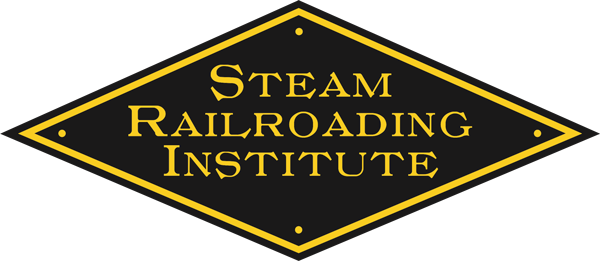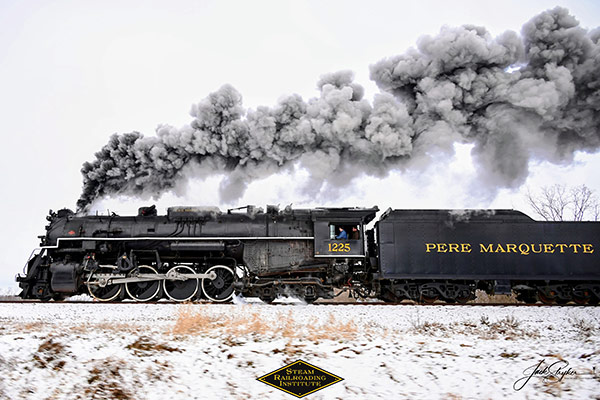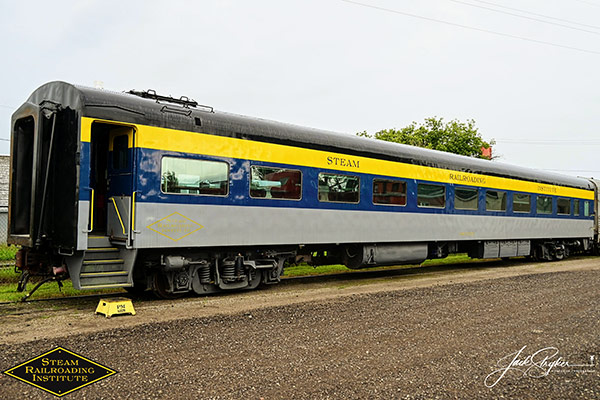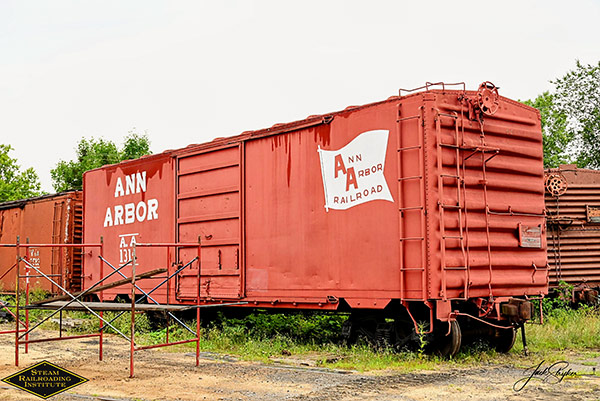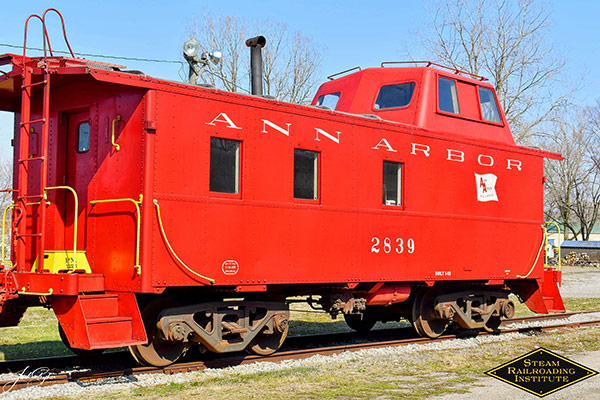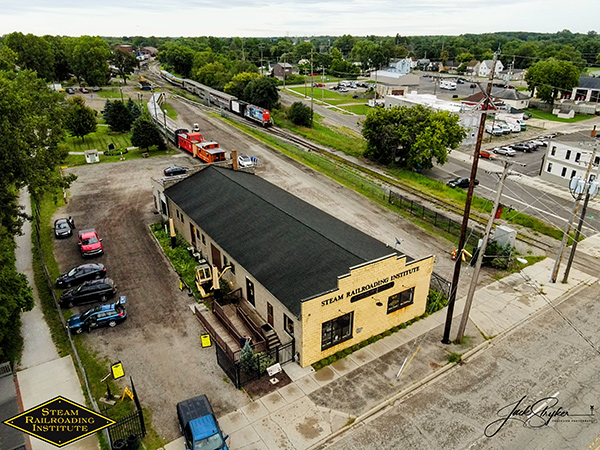Equipment
Motive Power
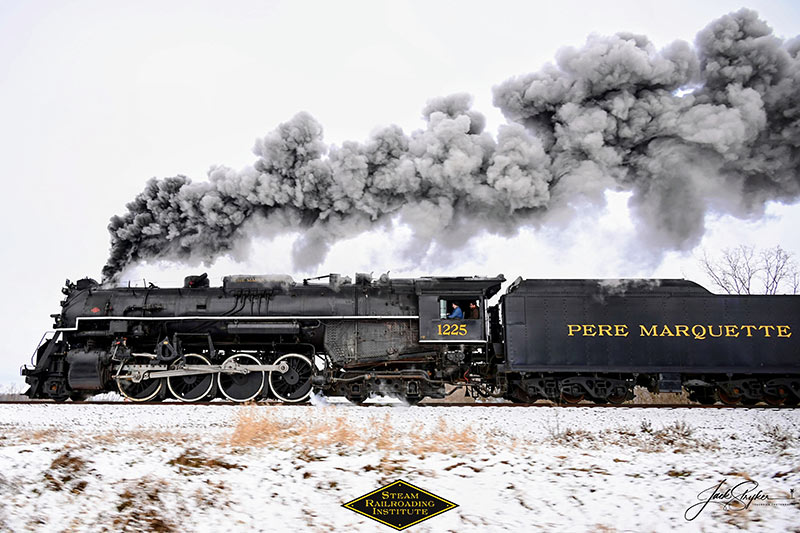
Pere Marquette 1225, the largest and most impressive piece in the Steam Railroading Institute’s collection, is one of the largest operating steam locomotives in Michigan. The 1225 was built in October of 1941 by the Lima Locomotive Works in Lima, Ohio for the Pere Marquette Railway.
The locomotive was used for 10 years between Detroit, Toledo, Flint, Saginaw, Grand Rapids and Chicago; hauling fast freight for the products of Michigan factories and farms, including war materiel when Detroit was the “Arsenal of Democracy,” producing huge volumes of vehicles, aircraft, and armaments. The locomotive is one of 39 2-8-4, or “Berkshire”, types ordered by the Pere Marquette. The superpower design was developed between 1925 and 1934 and used by over dozen railroads to haul freight at maximum speed and minimal cost.
The Pere Marquette 1225 is 15 feet 8 inches tall, 101 feet long with a combined working engine and tender weight of 401 tons, while producing an impressive 5000 tractive horsepower. It takes about eight hours to generate a full head of steam on the locomotive’s boiler, which operates at 245 pounds per square inch. The tender holds 22 tons of coal and 22,000 gallons of water, consuming one ton of coal for every twelve miles and 150 gallons of water per mile. The locomotive cost $245,000 or roughly $2.5 million by today’s standards.
The Pere Marquette Railway merged with the Chesapeake and Ohio in 1947, but the 1225 continued in service until its retirement in 1951 in favor of diesel locomotives. In 1957, the locomotive was saved with the help of Forest Akers; Dodge Motors’s Vice President and Michigan State University Trustee, who saw it as a real piece of machinery for Engineering students to study.
Displayed as an icon of the steam-era, it sat at MSU until 1969, when a group of students took an interest in the locomotive. The Michigan State University Railroad Club was formed with the ambitious goal of restoring 1225 and using it to power excursion trains that would bring passengers to football games at the university. In 1982, under the newly evolved Michigan State Trust for Railway Preservation Inc, the donated locomotive was moved to the former Ann Arbor Railroad steam backshop in Owosso where the restoration continued until 1985 when it moved under its own power for the first in 34 years.
Today the Pere Marquette 1225 is owned, maintained and operated by the Steam Railroading Institute. It’s part of the National Register of Historic Structures and is renowned for its role in the 2004 Warner Brothers Christmas Classic, THE POLAR EXPRESS™. 1225’s blueprints were used as the prototype for the locomotive image as well as its sounds to bring the train in the animated film to life!
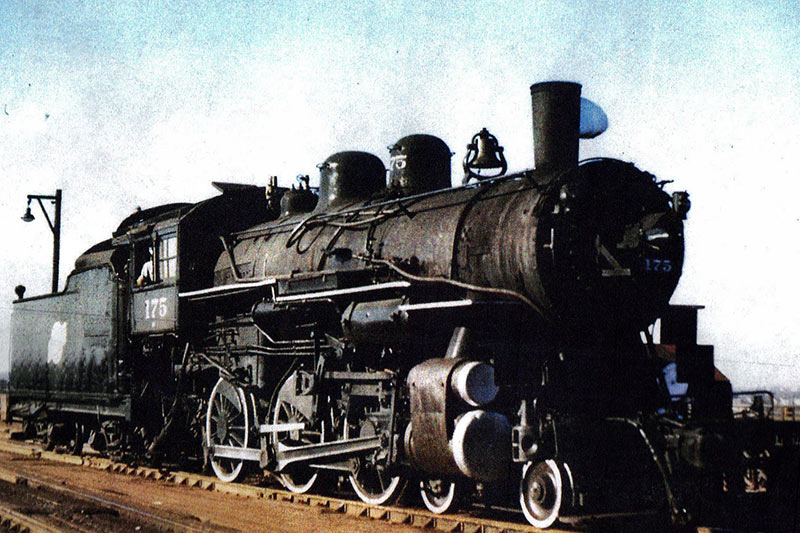
Chicago and North Western 175 was built in 1908 by the American Locomotive Company in Schenectady, New York. The locomotive hauled freight and passenger trains from rural Wisconsin to the iron-mining territory of Michigan’s Upper Peninsula on the Chicago and North Western Railroad until the early 1950’s. It is a relatively late example of a 4-6-0 Ten-wheeler; the standard dual-purpose locomotive of the early 1900’s and used on light trains until the 1940’s. Between 1900 and 1950, a large share of the transportation in the upper Midwest was accomplished by locomotives like the 175.
The Chicago and North Western and related railroads had 395 4-6-0’s built to this general design by 2 builders between 1901 and 1910, but the 175 is one of the 40 most modern; being equipped with the Walschaerts valve gear instead of the more primitive Stephenson design. With 63-inch driving wheels, these locomotives were known to exceed speeds of 60 miles per hour.
The 175 is the only CNW locomotive in Michigan and was the last steam locomotive to operate on the railroad before its retirement in 1957. The locomotive was sold to private owners in 1960 and spent many years in storage near Calumet, Michigan. In 2017, the 175 was generously made available for purchase to the Steam Railroading Institute by Mineral Range Inc, operator of the Mineral Range Railroad in Ishpeming. After final agreements and purchase was conducted, the locomotive was moved to its new home in Owosso.
SRI has begun the restoration of the Chicago and North Western 175 to operating condition alongside the Pere Marquette 1225. Grants and gifts to finance the project are currently being sought. This will be the organization’s second locomotive restoration project, following 1225’s return to service.
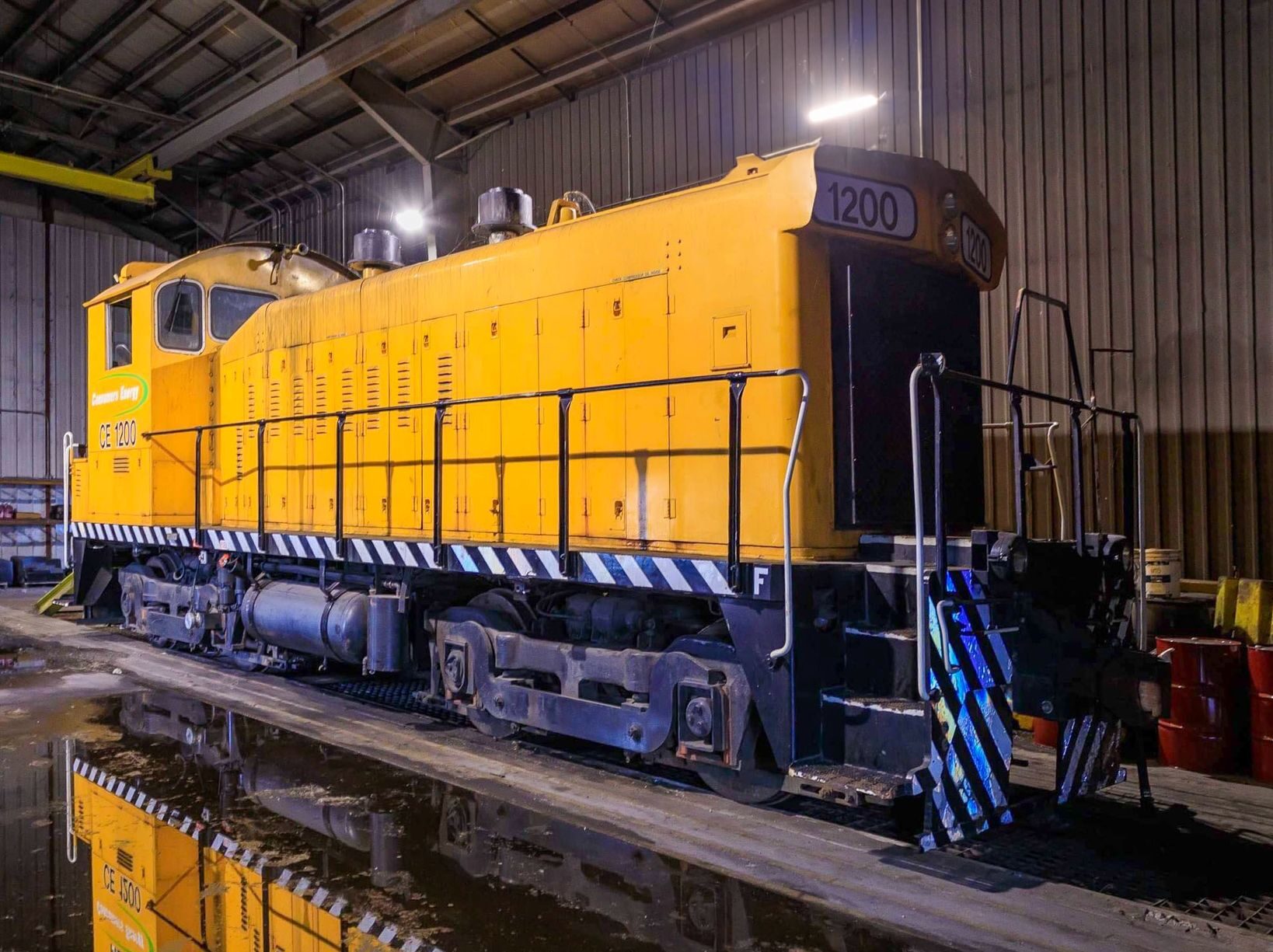
This locomotive, a 112-ton “SW1200” switcher, was manufactured between 1955 and 1960 by the Electro-Motive Division of General Motors at its London, Ontario plant for the Canadian National Railway. It was extensively rebuilt in 2004 by Relco and sold to Consumers Energy. Weighing about 224,000 pounds, it pulled about 66 coal cars, roughly 16 million pounds, at the Dan E. Karn Generating Plant in Essexville, MI to help generate electricity for Consumers Energy customers. In November 2023, Consumers Energy generously donated the locomotive to the Institute. Its new number, 1155, will pay homage to Lima Locomotive Works’ number designation given to the group of steam locomotives ordered by the Pere Marquette in 1941; this was partly due to not knowing the locomotives original Canadian National Railway’s number.
1155 is used occasionally on excursions while primarily moving equipment around the SRI railyard for demonstrations and excursion prep work. It serves as a great teaching tool to help explain the transition era from steam to diesel locomotives.
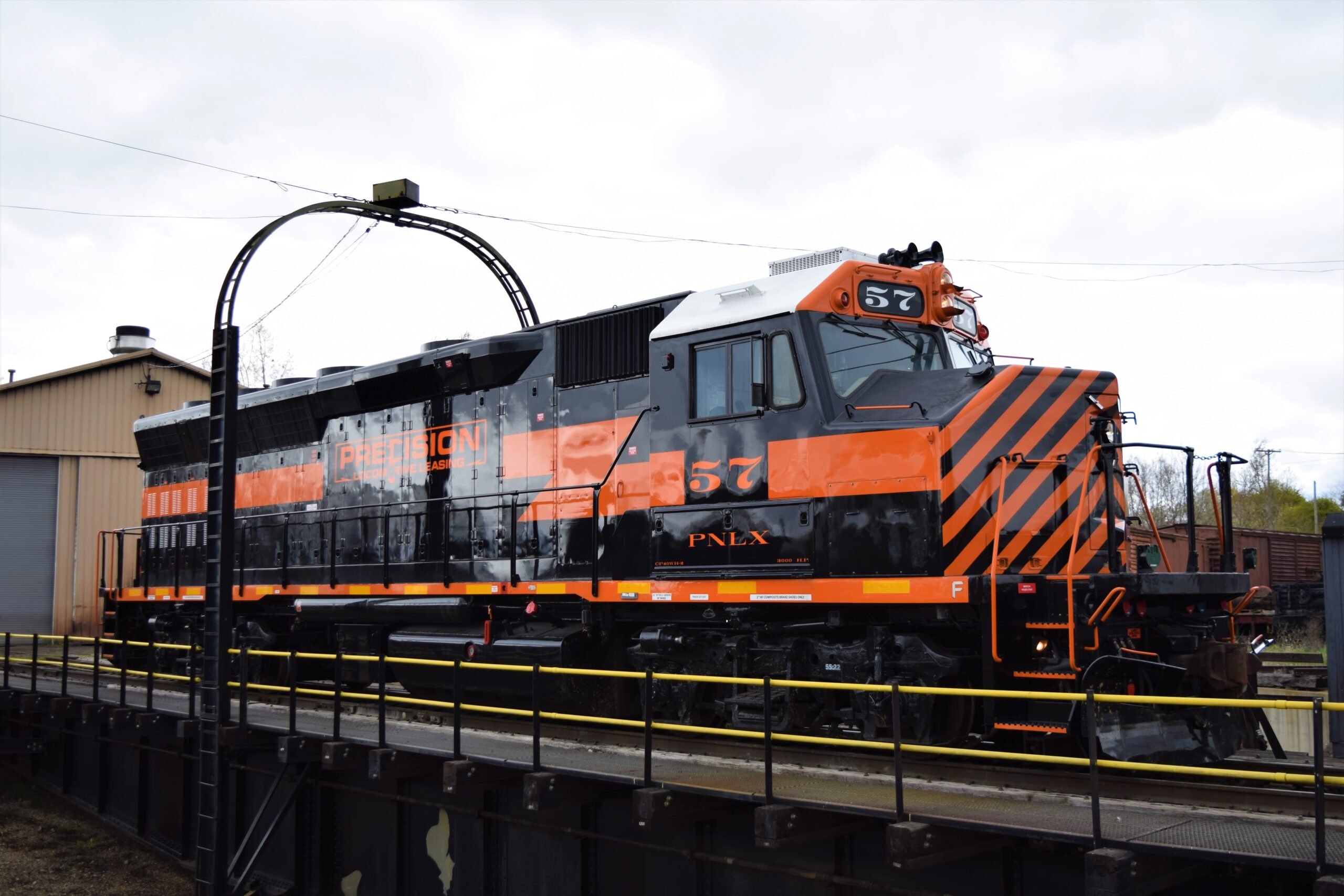
Originally built in 1966 by the Electro-Motive Division of General Motors in La Grange, Illinois, this type of locomotive was used to haul heavy freight trains before being completely rebuilt in 1993 by Morrison-Knudsen into a “GP40-2WH” passenger locomotive for service on the Maryland Area Rail Commuter (MARC). The locomotive was last used by MARC in 2012 before being sold to Precision Locomotive Leasing & Sales LLC. The Steam Railroading Institute tested the locomotive for its 2022 North Pole Express which it proved to handle with ease. SRI entered into a 5-year lease for locomotive 57 until Spring, 2028.
- GP: General Purpose
- 40-2: Model of Locomotive
- W: Wide-Cab
- H: Head-End Power (powers our passenger cars)
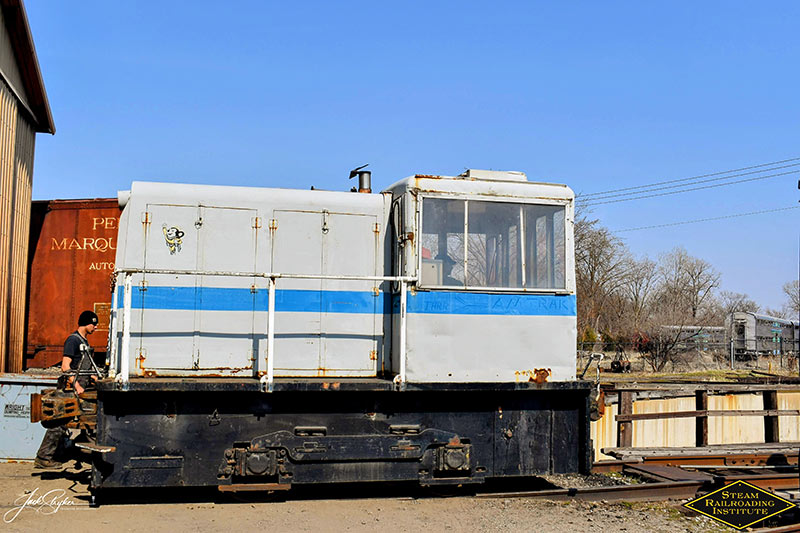
Built in the 1940’s by General Electric in Erie, Pennsylvania, this type of locomotive was used in light switching at industrial plants and elevators. The locomotive was last used by an elevator at Shelby, Ohio before being purchased by the Steam Railroading Institute at an auction in 2008. It is the primary switching locomotive in the museum’s yard, and for pulling the 1225 onto the turntable when not under steam. “Mighty Mouse” gets its nickname from a previously added decal on the hood of the locomotive.
Passenger Cars
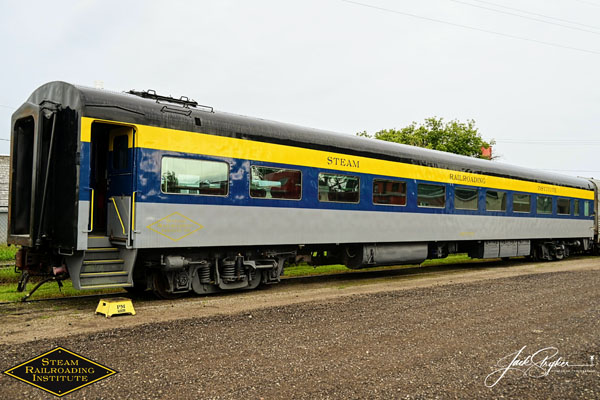
All 9 cars were part of 2 orders in 1952 and 1953 for 218 80-seat coaches for modernization of the Canadian National Railway’s passenger service. They were built to designs of the Pullman Standard Car and Manufacturing Company and delivered from the Canadian Car Foundry in early 1954. The cars were used on the Canadian National’s premier trains of the 1950s. They were delivered in the distinguished green-and-black “maple leaf” paint scheme and later changed to the grey-and-black scheme in CN’s 1966 image makeover. The cars operated across Canada, and presumably operated through Michigan on the International, Maple Leaf, and other through passenger trains between Toronto and Chicago. They were converted to 76-seat coaches in the 1960s with the addition of end luggage racks and later redecorated by VIA sometime after 1977.
In February of 2005, the Steam Railroading Institute purchased cars 5576, 5581, and 5646 from the Tuscola and Saginaw Bay Railway Company, which previously modernized them with Head End Power (HEP), new heating and air-conditioning. Car 5447 was retained by the Great Lakes Central Railroad until 2019 when it was purchased by SRI. Cars 5467, 5482, 5485, 5600 (3037) and 5610 served the Adirondack Scenic Railroad from 1996 until being purchased by SRI between 2022 and 2025. Car 3037 was originally coach 5600 and was converted to coach-café car 3037 in 1965. It will be rebuilt into an open-air car and return to its original number of 5600.

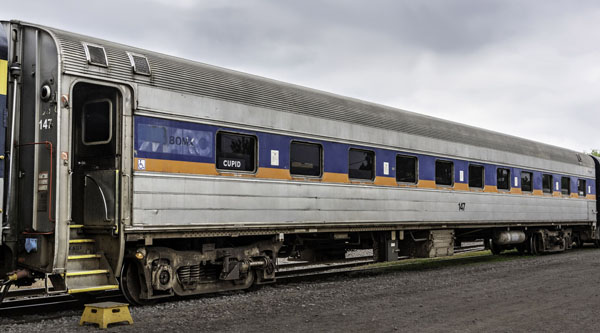
This coach has an interesting history. Built in 1950 by the Budd Company as a 21-roomette sleeping car, the “Norristown Inn” served the Pennsylvania Railroad, named after one of the colonial-era taverns. With the shrinkage of Pullman service, this order of stainless-steel sleeping cars was returned to the Budd Company for conversion to commuter coaches in the 1960s and were commonly used between New York and Washington in Clocker service.
12 cars were purchased using Urban Mass Transit Administration funds by the Southeast Michigan Transportation Authority (SEMTA) in the 1970s where this car was renumbered 107 “Troy.” At the end of Detroit’s commuter service in 1984, the cars were transferred to the New York MTA and ultimately Maryland’s MARC (Maryland Rail Commuter) Train Service. They were completely rebuilt by MARC in the early 1990s, and later donated to several museums upon retirement.
MARC 147 was given to the B&O Railroad Museum in 2001, which generously made the car available for purchase by the Steam Railroading Institute after a long-term lease in 2017.


This diner was built in 1958 by the Budd Company with a smooth-sided body, stark contrast to the stainless-steel design of the manufacturer’s fame, as part of an order of 6 identical diners for use on the North Coast Limited: between Chicago and Seattle. Originally built to the number of 462 with a seating capacity of 48, at some point it was reduced to 40. The diner was briefly renumbered to 1296 when the Burlington Northern Railroad took over the Northern Pacific in 1970. 1296 was sold to Amtrak in 1971 when Amtrak took over the nation’s passenger service and renumbered the car to 8048.
In 1980, Amtrak remodeled the diner while also renumbering it to 8506. 6 years later in 1986, the diner was reconfigured to a griddle-diner. Bringing the seating capacity back up to the original 48 and renumbered it to 8550 which it would be retired as in 2019 with a final tally of 6,801,750 miles!
Acquired in 2019 by the Steam Railroading Institute, 8550 returned to service in late 2021 as 462 once again.

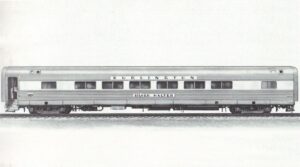
Built in 1956 by the Budd Company for the Chicago, Burlington and Quincy Railroad, this car’s lifespan began as a 50-seat coach known as “Silver Halter” and numbered 4739. Primary service included the Denver Zephyr between Chicago and Denver.
When Amtrak took over the majority of the nation’s passenger service in 1971, 4739 was renumbered to 5016. In 1985, the coach was reconfigured to a diner-cafeteria and numbered 8716. Rebuilt and reconfigured yet again in 2009, it was finally numbered 8532. The last use of this car was in 2018, being retired with 6,250,217 miles. This car has a seating capacity of 40 people.
Acquired in 2019 by the Steam Railroading Institute, plans are being made to return the car to full passenger dining service on future excursions.
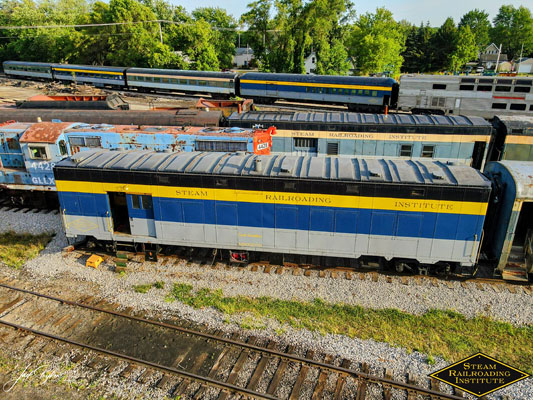
In late 1943, the U.S. Office of Defense Transportation contracted with the Pullman Company to build 2,400 troop sleepers due to a shortage of sleeping cars brought about by World War II. These cars carried soldiers in a cheap, noisy, rough-riding alternative to passenger-type sleeping cars, but with the services of a Pullman porter. The soldiers slept in 24 three-high bunks. Troop cars saw service though 1947, after which many were sold by the U.S. Army Transportation Corp. Many railroads subsequently converted them into mail cars, express boxcars, box or refrigerator cars, cabooses or camp cars.
Pere Marquette 361 was purchased as war surplus by the Pere Marquette Railway in 1949, who converted it to a baggage car by plating over the windows and adding a baggage door. It was used by the Pere Marquette’s successors, Chesapeake and Ohio Railway and Chessie System, in maintenance-of-way service (renumbered to 1701) until 1985 when it was donated to the Michigan State Trust for Railway Preservation. It’s currently used as the tool car both at the Steam Railroading Institute and out on the road with Pere Marquette 1225.
Detroit & Mackinac 7 was purchased as war surplus by the Detroit & Mackinac Railway in 1948, who converted it to a baggage car by plating over several windows and adding a baggage door and vestibules. After passenger service ended on the D&M in 1951, the car was made into a caboose, allowing D&M to retire several aging wooden cabooses. In the 1970s, a Detroit Diesel generator was added to the car, to serve as a power car for D&M’s business-car fleet. In 2004 the Steam Railroading Institute purchased the car for use as an auxiliary power car. A second Diesel generator set was added in 2018.
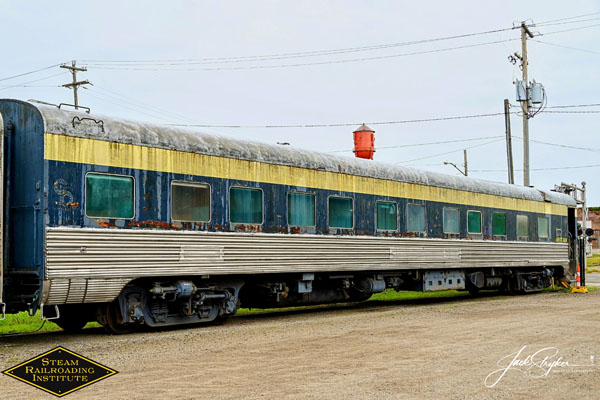
Sleeping cars provided overnight transportation in the era before intercity auto and air travel. Built by the Pullman Standard Car and Manufacturing Company in 1950, this car is one of the last generations of railroad sleeping cars. Unlike the open-berth cars of the 1920s, these streamlined cars had all enclosed rooms. This is the most common style of lightweight sleeper, known as a “10 6” because it has 10 small roomettes with a single bed each, and 6 double bedrooms with two beds, that can be combined into suites. Normal occupancy would have been 22 passengers, assisted by a Pullman porter who slept on a short bunk at one end of the car.
The “City of Ashland” is one of a large order of 56 10-6’s for the Chesapeake and Ohio Railway, intended for service between Washington, Newport News, White Sulphur Springs, Cincinnati, Chicago and Detroit. These 56 cars were named for cities on the C&O line; including several in Michigan that did not have sleeping-car service or even passenger service. Sleepers built in the early 1950’s went out of use quickly due to being obsoleted by highways and airlines.
This car was sold to a private collector in 1971 and was stored for many years along with sister car “City of Ludington” in Lima, Ohio until the early 1990s. Steve Zuiderveen, John Baldwin and Max Smith became owners of the car until 2003 when it was donated to the Steam Railroading Institute. “City of Ashland” retains its original interior and is operable, but presently used only for crew accommodation.
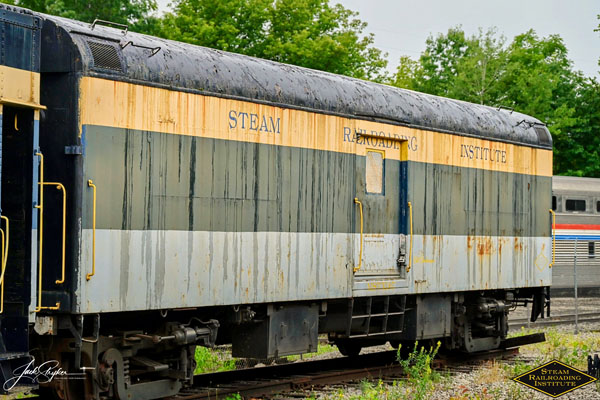
Built in 1950 by the St. Louis Car Company, USAX 89646 was used as a kitchen car for the U.S. Army hospital and troop trains. It was sold in the 1970s to several different entities, including Amtrak. Amtrak converted this car to baggage car 1367 and used it until the mid-1990s, when it was sold to the Steam Railroading Institute. It is currently stored awaiting re-use.
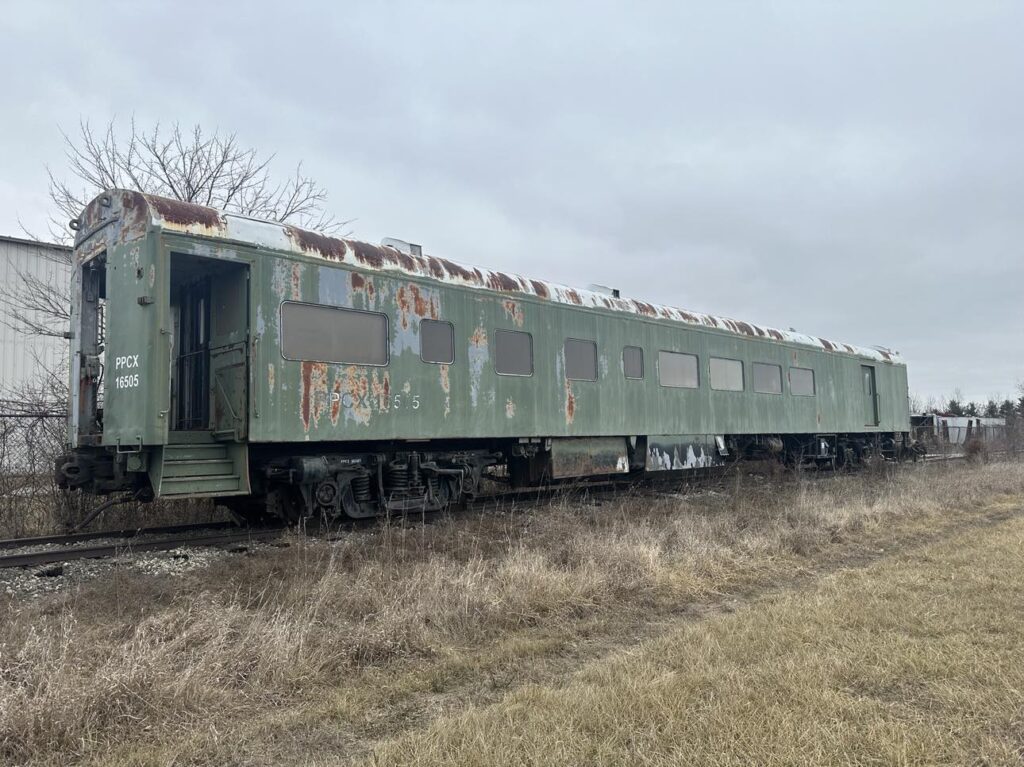
Originally constructed by the St. Louis Car Company for use in the Korean War in 1953, this car saw little service as they were finished near the end of the conflict. It originally featured an operating table, retractable berths, shower, doctors’ quarters, nurse desks, a small kitchen, and “casualty doors” for loading patients on stretchers.
This car became part of an Air Force Missile Train Prototype in 1960 and was later converted into a baggage dormitory car by Amtrak in 1973. It was eventually acquired by Fort Wayne Railroad Historical Society (FWRHS) member Bob McCowan who later donated it to the society. As part of a trade in 2023, FWRHS made 16505 available to SRI.
SRI plans on rebuilding the car, while renumbering to 7839, into an all-encompassing tool car with a machine shop, tool storage, kitchen and dining area, laundry capabilities, shower, two master bedrooms, and six roomettes. Once reconfigured, the car will be able to sleep 8 while on the road.
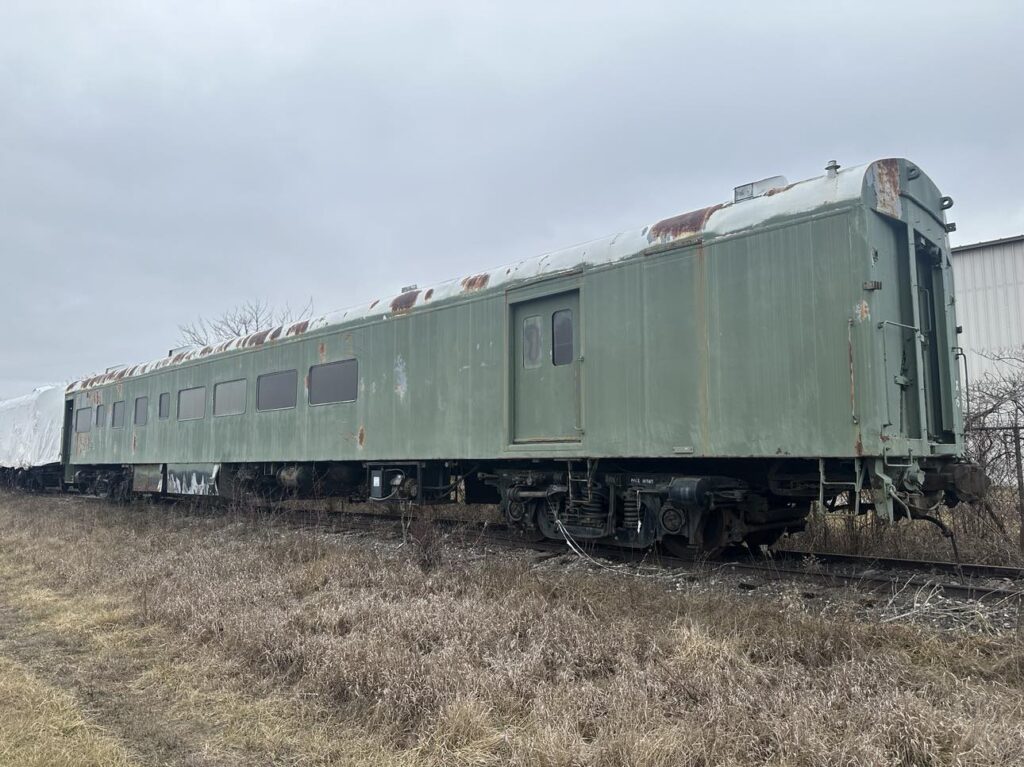
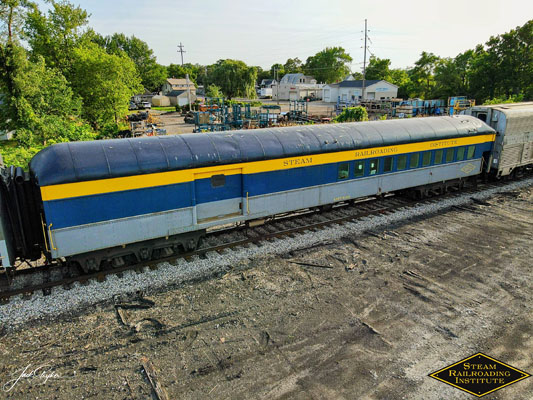
Built in 1934 by the Pressed Steel Car Company for the Chesapeake and Ohio Railway, this car was used in branch-line service but sold shortly thereafter to the Chicago Great Western (CGW) Railway. The CGW modernized the car with engine-powered air-conditioning and reclining seats until the railroad’s successor, the Chicago & North Western Railroad, converted it to a camp car for track crews. It was eventually donated to the Illinois Railway Museum in Union, Il. The car was sold by the Illinois Railway Museum to Steam Railroading Institute member Gary Knudsen, who donated it to SRI.
4620 was one of the very last “heavyweight” (80 tons) passenger cars to be built, of the type that was standard between 1914 and 1934. It has a non-structural riveted steel car body on a steel girder frame. All other passenger cars at SRI are “lightweight” (70 tons) streamlined cars with load-bearing car bodies.
It’s currently used as the concession and merchandise car for the Steam Railroading Institute’s excursions.
Freight Cars
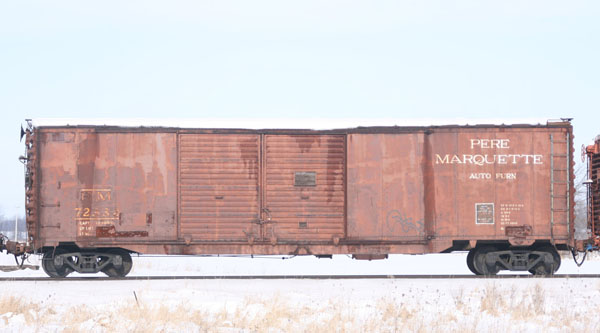
Built as part of a 200 car-order by the Ralston Steel Car Company, these boxcars were constructed between August and December of 1946 and were nearly identical to the ones constructed by Greenville Car Company in 1940. These were the last new cars to be ordered by the Pere Marquette Railway before their merger with the Chesapeake and Ohio in June of 1947.
50-foot, double-door boxcars-equipped with Evans auto loader devices-carried the products most associated with the Pere Marquette, finished automobiles from Detroit and Flint, auto parts in special racks, and furniture from Grand Rapids. Shipment of automobiles in boxcars came to an end just after these cars were delivered and they were used in regular service starting in 1963 until being retired between July of 1976 and July of 1977.
This car was found by Michigan State Trust for Railway Preservation members being used for storage in Wayne, Michigan and was donated by the Chessie System on August 1st, 1981, in the same special train that was moving sister Berkshire PM 1223 from Detroit to Grand Haven. It currently serves as storage and as part of a recreation of a 1940’s-era freight train for photo charters.
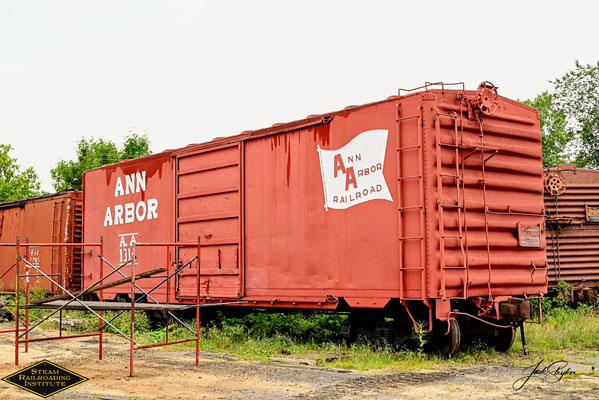
Ann Arbor 1314 is one of more than 76,000 40-foot PS-1 boxcars that were built by Pullman Standard Car and Manufacturing between 1947 and 1967 and arrived on the Ann Arbor Railroad in 1957. Car 1314 represents one of the most important standard postwar freight-car designs. The 40-foot boxcar was the standard car for haulage of most kinds of freight before the shift of small shipments to trucks and adoption of longer cars with specialized designs in the 1960s. Delivery of these cars allowed the Ann Arbor to retire the rebuilt ex-Wabash cars of the 1100-series.
Car 1314 was acquired by Michigan State Trust for Railway Preservation in July 1984.
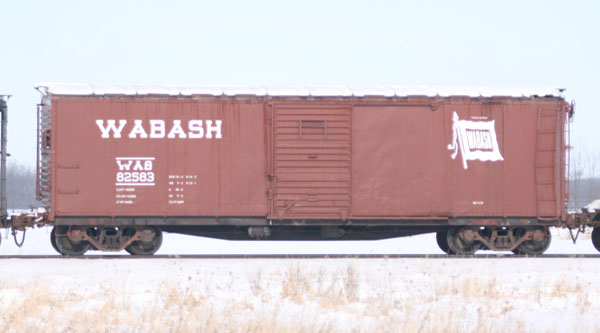
Originally double-sheathed wood cars, built to the World War I standard designs of the United States Railway Administration, these cars were delivered to the Wabash Railroad as series 23000-24000; consisting of two groups of similar cars built in 1922 and 1923. These cars were rebuilt during World War II by the Wabash at its Decatur shops in Illinois to meet the wartime demands and re-numbered into the 82000-82512 series.
The Ann Arbor purchased 50 of these cars in 1954, renumbered to the 1100 series, and used them in regular service until the delivery of their first order of PS-1 boxcars in 1957. After the delivery of the PS-1’s, some of these cars survived in maintenance-of-way service through the Ann Arbor Railroad bankruptcy.
1138 was donated to the Michigan State Trust for Railway Preservation by the State of Michigan in 1983 as part of the dissolution of assets and has been restored to its 1940s Wabash number and paint scheme. 1128 remained in company-service use until it was donated by the Great Lakes Central Railroad in 2007. Both cars retain their Ann Arbor 1954-renumbers on the interior of the upper door frame.
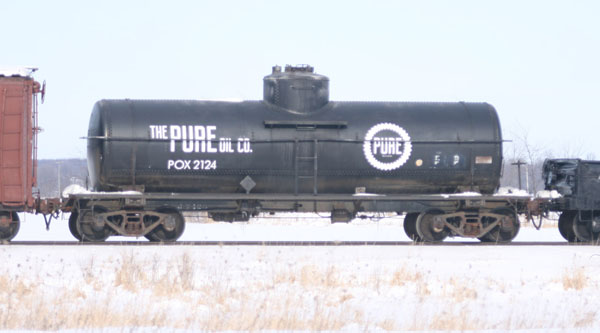
Not much is known of these cars prior to their purchase by the Detroit & Mackinac Railway in the mid-1960s. Markings on the cars and trucks seem to indicate their construction sometime just prior to World War II for either GATX or other car fleets. D&M used these as fuel-oil storage at a facility in Bay City, Michigan for many years.
They were donated to the Steam Railroading Institute by RailAmerica in 2007, and now operates as part of our photo charter freight train and as eventual auxiliary water cars for our steam locomotives. One car has been restored to represent a Pure Oil tank car, and the other to a Dow Chemical scheme, thanks to a grant from the Gerstacker Foundation.

The 50-foot gondola was the standard car for shipment of steel products, scrap metal, machinery, and other freight loaded by cranes or shovels. This car was built in December 1939 for the Chesapeake and Ohio Railway. It was retired from freight use and converted to a wheel car at Russell, Kentucky in 1969.
Used for many years to move freight-car wheelsets by successors, Chessie System and CSX, the Bluewater Chapter of the National Railway Historical Society acquired the car in the late 1980’s. It came to the Steam Railroading Institute in 2007 and was repainted to a dual Pere Marquette/C&O scheme in 2008.
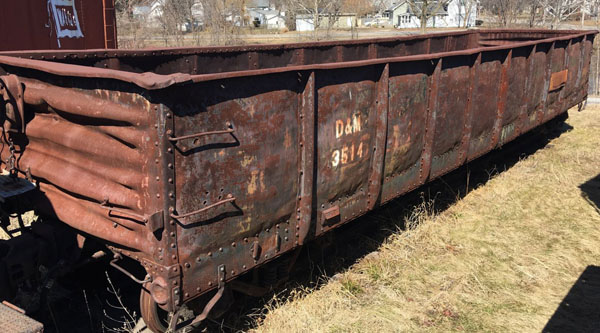
Built in 1947 for pulpwood, coal, and other uses for the Detroit & Mackinac Railway, this car and its sisters saw a variety of service over the years. One of the most unique uses was as idler cars for loading the Mackinac Transportation Company’s car ferry, Chief Wawatam, between Mackinac City and St. Ignace, Michigan.
When the last of these cars were scrapped by D&M successor, RailAmerica, this car was donated to the Steam Railroading Institute in 2007.
More Coming Soon!
Other Equipment
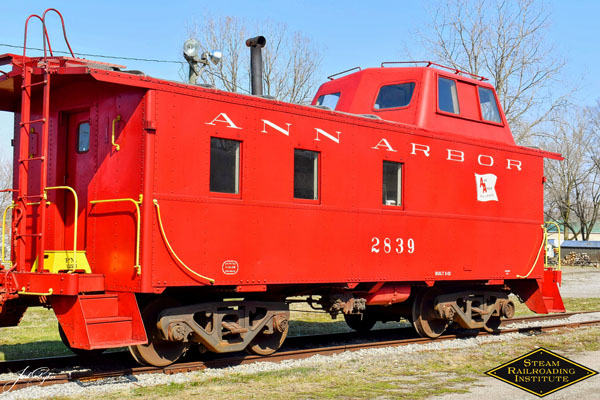
Built in January and March of 1952 respectively by the Wabash Railroad in Decatur, Illinois, these two cabooses served the Ann Arbor Railroad between Toledo, Ohio and Frankfort, Michigan. These cars were serviced during their careers in the old railroad shops in Owosso, now operated by the Great Lakes Central Railroad. The cars have a unique streamlined cupola design used by the Wabash and its subsidiaries.
2838 had a rough life on the Ann Arbor Railroad. In the 1970s, the car suffered an interior fire after rolling down an embankment during a derailment near Farwell, Michigan. The interior of the car was completely redone, hence its different appearance from the 2839. No. 2838 was auctioned by the State of Michigan in 1985 as part of the Ann Arbor’s bankruptcy. The caboose was purchased by the Bluewater Chapter of the National Railway Historical Society before being sold to the Steam Railroading Institute in 2007. Restoration was made possible with aid from the Krauss Foundation of North Carolina, as well as donations from the Marsh and Wilson families. 2838 has been restored to the “DT&I/ Compass” scheme, as it appeared in the mid-1960s.
2839 was kept in service after the Ann Arbor Railroad’s bankruptcy and was purchased by the reorganized Ann Arbor Railroad Company and was used in and around Toledo, Ohio until the 1990s. It was then purchased by Steam Railroading Institute member Steve Zuiderveen, who moved it to Maryland to repair the damage from a collision on the Ann Arbor. The car came to SRI in 2004 and was restored by the volunteers in 2005 to the “Wabash/ Flag” scheme as when delivered in 1952. Mr. Zuiderveen donated the caboose to the Steam Railroading Institute afterwards.

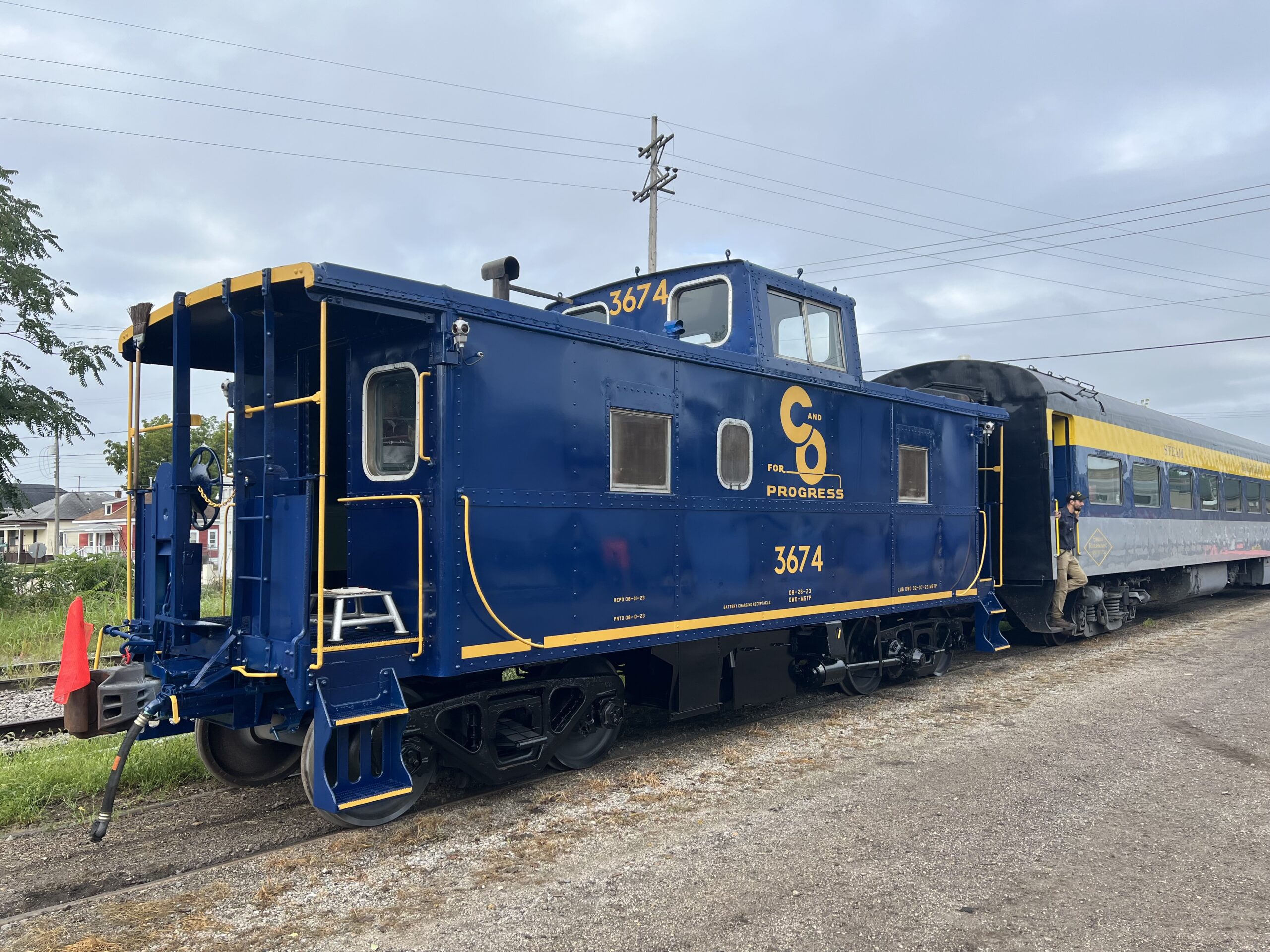
Built on April 26, 1941 (to the same standards of our Pere Marquette A909) for the Chesapeake & Ohio Railroad as caboose number 90091.
90091 was completely rebuilt in Grand Rapids, MI in July 1970 with electric lighting and roller bearing axles and renumbered to 3674; a sanitary toilet and radio were later added between 1977 and 1979. A total of 185 of these types of cabooses were rebuilt in Grand Rapids over a 21-month period from 1969 to 1970. In 1982, 3674 was renumbered to 903674.
Retired in 1986 and later donated to 10 year old Mike Burgett of Sebewaing, MI in 1988. Mike made the caboose available for donation to the Steam Railroading Institute in the winter of 2022. It arrived in February 2023 and was returned to service in its C&O 3674 color scheme and number later in the year.
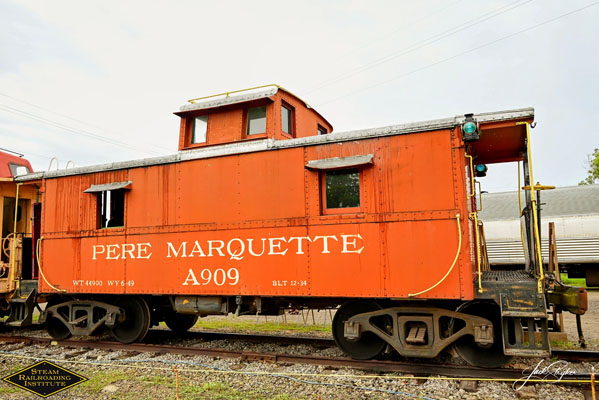
Built by the Magor Car Company in September 1937, A909 (The “A” was for accommodation) was part of an order of 25 cabooses for the Pere Marquette Railway. Cabooses of this style were used on every freight train hauled by the 1225. In 1950, A909 was relettered to the Chesapeake & Ohio and went on to serve the C&O Railway and Chessie System until its retirement in July of 1983. After retirement, it was donated to the Michigan State Trust for Railway Preservation.
Today, it is used on certain excursions for the Steam Railroading Institute and on freight trains for photo charters. The original Andrews-style 1911 boxcar trucks were replaced by more modern caboose trucks in 2017 as a safety measure.

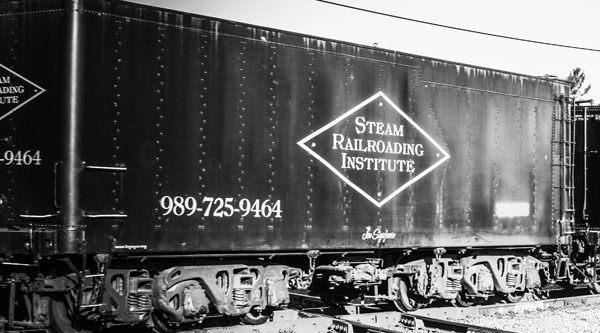
The Steam Railroading Institute’s auxiliary water tank car is the tender from a Chicago, Rock Island and Pacific 5100-series 4-8-4 steam locomotive, built by the American Locomotive Company in Schenectady, New York. In the 1950’s, the Rock Island converted many of these tenders to movable diesel-fuel tank cars for branch-line terminals. This car was sold to steam locomotive collector, Dick Jensen of Chicago, and resold to a steel mill for fuel storage at Lemont, Illinois.
It was purchased in 1982 by Steam Railroading Institute member, Aarne Frobom and donated to SRI for use behind Pere Marquette 1225 on longer trips. It has an approximate water capacity of 27,500 gallons
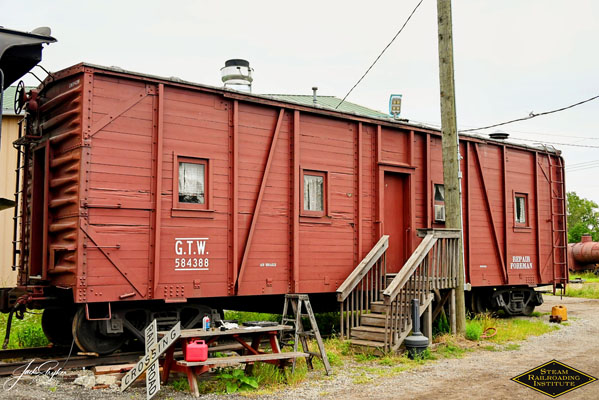
This single-sheathed wood-sided boxcar was constructed as an automobile car for transporting assembled 1920s autos. Originally numbered 58332, this is a unique style of boxcar common to Michigan railroads when finished autos were hauled. Most auto-boxcars had double side doors; through which cars were laboriously moved and jacked into position, elevated over each other. This car originally had end doors through which cars could be driven. After use of this inefficient method was abandoned, auto-boxcars were used in general freight service.
Several of these cars were rebuilt by the Grand Trunk Western Railroad’s Port Huron car shops in the late 1950s and early 1960s for maintenance-of-way service. This car was stationed at Pontiac, Michigan for several years, and saved by the Bluewater Chapter of the National Railway Historical Society before being sold to the Steam Railroading Institute in 2007.
In July of 2008, SRI received a National Railway Historical Society Grant to re-do the wood exterior of this car. The car’s entire wood interior and exterior were replaced by Andrew Munerance and many other volunteers as part of his Eagle Scout project. The car is now back in its intended use as a foreman’s office.
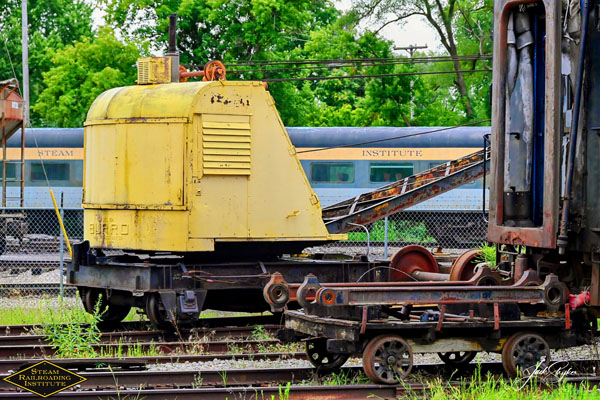
Built by the Burro Crane Company in the 1940’s for the Detroit, Toledo and Ironton Railway, these were designed for light lifting duties and hauling a single car of rail, ties, and spikes for track repairs. When the DT&I was purchased by the Grand Trunk Corporation, this crane was transferred and then donated to the Michigan State Trust for Railway Preservation in the 1990s. It’s used for light lifting jobs at the Steam Railroading Institute.
More Coming Soon!
More Coming Soon!
Structures & Landmarks
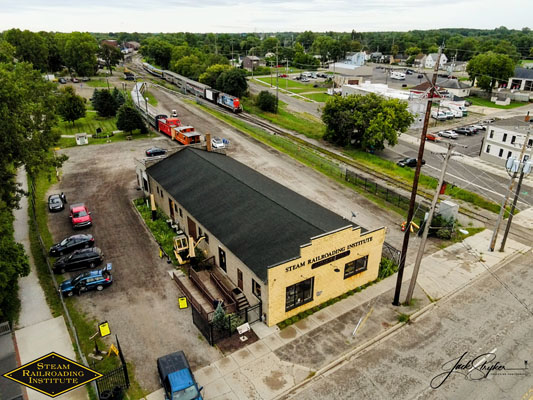
The Steam Railroading Institute’s welcome center is in a renovated freight warehouse that was originally serviced by the Ann Arbor Railroad. Its construction date is unclear, but a structure sat on its current foundation as early as the late 1880’s. It is speculated that this structure burned down and the current concrete-block one was built in the 1920s.
The building was originally used as a creamery, then as a warehouse for storing sacks of grain. Bruckman’s Moving and Storage then leased the building from the railroad and used it for storage. Owosso was traditionally a furniture and casket making city, known for its master woodworkers and the welcome center is an example of this facet of city history. The building’s floor is incredibly solid, capable of handling heavy loads and the ceiling is of solid wood trusses with king post supports on the ceiling.
In 2004, the building was purchased by the Steam Railroading Institute from the Tuscola and Saginaw Bay Railway Company and was renovated for use as the welcome center. It contains exhibits, a model railroad layout, and SRI’s collection of artifacts and archival materials in our library.
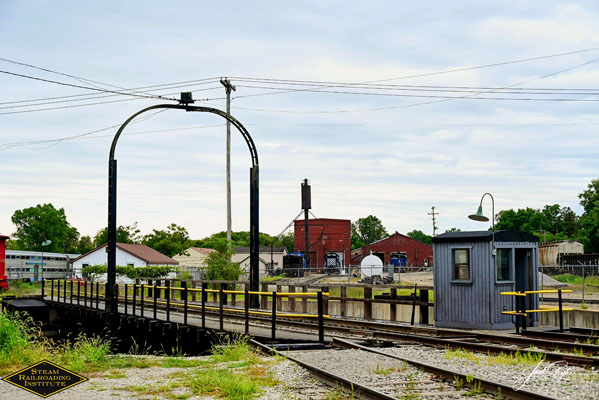
Built in 1919 with a 90-foot length, it was put in service on the Pere Marquette Railway at the engine terminal in new Buffalo, Michigan. It served a 16-stall roundhouse and was in use until 1984 when the Chessie System ceased operations at the terminal. Today, the relocated turntable functions much as it did during the steam era. The Steam Railroading Institute uses it to turn the equipment, provide service to the backshop, and for demonstrative purposes for visitors. The Pere Marquette 1225 used this turntable during its service despite its short length. SRI, upon purchasing the turntable, added an additional ten feet to the length of the bridge making it easier to accommodate 1225 and other large steam locomotives and rolling stock.
Searchlight signals arose from the early era of electrified wayside railroad signaling when bright light sources were extremely expensive, high energy consuming, or simply unreliable. The searchlight signal solved this problem by using a single low-power lamp in front of a parabolic reflector. The reflected light beam was directed through a rotating armature (i.e. Vane) with colored roundels, then fed through one or two convex lenses to focus the light into a narrow, bright “pencil beam”. Due to the nature of the light beam, a person viewing the signal outside of the light beam can only see the signal very faintly. Because of this, the signals had to be carefully mounted and aimed so that the engineer of an approaching train could see the signal right up until the train was at the signal. Nevertheless, a person viewing the signal within the beam can see the signal from over a mile away, even in a broad daylight. The SA mechanism contains the lamp, reflector, rotating armature with color roundels, and “inner doublet” lens. The rotating armature is moved by a field coil electromagnet. When no electricity is flowing through the coil, it remains centered by gravity, holding the red roundel in the light beam which is then illuminated by a backup battery. When electricity flowing one direction is put through the field coil, the coil rotates moving the yellow roundel into the light beam. When electricity flows the opposite direction through the coil, it rotates in the opposite direction, placing the green roundel in the light beam. After the light beam travels through the one of the roundels, it passes through the inner doublet and outer doublet lenses and exits the signal. The color that a signal displays, along with whether that color is solid or flashing, is called the “aspect”.
Each railroad company has different aspects and indications for certain signals, meaning that the same signal could mean something different on two different railroads.
The once-ubiquitous searchlight signals are rapidly disappearing from America’s railroads, having been rendered obsolete by Light Emitting Diode (LED), Positive Train Control (PTC), and solid-state technology. Despite their reliability, the searchlight signals have fallen out of favor due to their moving parts and limited visibility, compared to modern LEDs. Despite this, some examples of these signals cans still be found in operation on North America railroads.
These specific signals were built in 1952 and install to protect the crossing of the New York Central and Pere Marquette in Vassar, Michigan.
(Photo Coming Soon)
